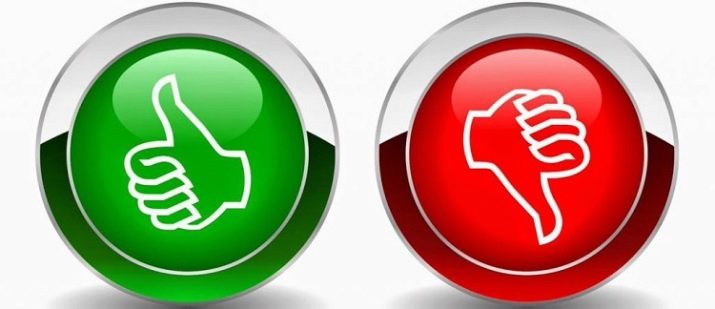Ethics and etiquette: what's the difference?

Many people equate the concepts of ethics and etiquette. Such perception occurs not only because of the consonance of these two words, but also because they have a lot in common with each other. However, there is still a difference between the rules. What unites these two phenomena, and how they differ significantly from each other, let's try to understand this article.

The concept of ethics and etiquette
Ethics is the science of morality and ethics. It refers to philosophical disciplines, and the term itself has ancient Greek roots. It was first used and introduced by Aristotle. Morality is a fundamental way to regulate human behavior in society, it is a system of norms and principles of a correct way of life. Any moral norm teaches people humanity and life together. Ethics concerns all spheres of human life and society as a whole, is based on the manifestation of mercy and justice in relation to everything around.
The main tasks of ethics as a science are the following:
- the study of the history of morality and its principles, norms and everything related to moral culture;
- an explanation of the concept of morality from the point of view of what it should be and what it really is;
- the study of moral values, what is good and evil.

Etiquette is a set of rules of conduct accepted in a certain society. The concept of etiquette has existed since ancient civilizations, which observed certain rituals and had their own hierarchy. For the first time, the use of this term was noted during a court ceremonial during the reign of the French king Louis XIV. Cards (labels) were handed out to guests in the palace, on which the rules of conduct during the ceremony were painted.
Behind the word of French origin lies a huge number of customs, the manifestation of politeness and the observance of the aesthetics of behavior in society, many of which originate in antiquity. However, the same etiquette rule can be perceived differently in different historical eras or among residents of different countries.

Etiquette teaches not only courtesy, but also the correct presentation of oneself - it dictates conventions in clothing and behavior. And although for the most part the established rules of conduct are not compulsory, but only recommended for use, their gross violation can lead to condemnation by society or even rejection from ignorance.
Etiquette is conditionally divided into several types:
- secular etiquette - accepted norms of behavior at the palace, in the modern world is used in monarchical countries;
- official or business etiquette - used in professional activities, depending on the norms adopted for a particular field of activity;
- diplomatic - generally accepted rules for holding meetings between diplomats and other officials at the interstate level;
- military - a set of rules for the conduct and treatment of military personnel both in the performance of official duties and in public places;
- general civic etiquette or rules of conduct in public places are applicable to the communication of individuals of a particular society among themselves.


In addition to the listed types, rules of behavior at the table, established rules for saying goodbye to the dead, professional etiquette of doctors and teachers, and other types of rules of conduct are often used.

Key Similarities
The correlation of moral norms and rules of etiquette allows us to see that their provisions have common components.
- Many consider these two concepts to be an inseparable pair, as they include etiquette in ethics as a science. Often, in the process of mastering and accepting the norms of etiquette by a person, a person involuntarily correlates this or that norm with his ethical considerations, can accept or reject it, try to adjust it to his conscience.
- The existing canons of ethics and etiquette can be divided into two groups. The first includes the norms governing the treatment of a person with other representatives of society. The second group contains the regulations for the behavior of the individual in society, which do not imply communication.
- Both of these sciences are designed to determine the rules for the relationship of people in society, teach them to coexist peacefully. Both ethics and etiquette are an integral part of the personality, its moral self-awareness.
- Both of these phenomena are reflected in human actions and behavior, as well as in the opinion of the outside. Conclusions and conclusions about the assimilation and application of ethics and etiquette are made on the basis of observations, but the assessment may be subjective due to different moral ideas.
The rules of behavior in society may also differ in different societies, but within the same society they are the same for everyone.

Differences between the two concepts
Despite the close relationship, there are features that make it possible to distinguish between the concepts of ethical norms and rules of etiquette.
- Etiquette rules are usually documented in the form of a job description or code, contract. In addition, they may be the result of verbal agreements, centuries-old traditions or stereotypes. In any case, etiquette involves the existence of rules that people are forced to follow in order to appear polite. At the same time, ethical principles, in contrast to the norms of etiquette, are the main feature of human morality. Each person has his own acceptable set of ethical norms that make up the moral system of a particular person and are called conscience.
- For the most part, actions motivated by ethical considerations are important for evaluating oneself and remain something intimate. Etiquette norms are often associated with deliberately demonstrated, sometimes even pretentious behavior.
- A violator of the norms of behavior will be considered an ill-mannered person at most. The one who crossed the border of morality can even be held accountable.
Certain moral principles are fundamental and determine the possibility of the existence of society, therefore they are protected by law and severely punished.


- Ethics affects the internal, moral and motivational side of a person, and etiquette concerns the external, socio-economic component of the personality.
- Etiquette differs from ethics in that it is private. So, there are a large number of varieties of rules of conduct according to the type of society for which certain norms are effective. In addition, etiquette can be classified by scope.For different peoples, the rules of behavior in society are also considered acceptable, which often contradict each other. The moral norms that ethics teaches are the same for all people.
- Etiquette, unlike ethics, involves the observance of certain rituals. This ceremonial is obligatory, has a permanent form and is generally accepted.
- Another distinguishing feature is that etiquette is pragmatic. The level of seriousness of the event, and how different the social status of the participants, will depend on the observance of certain norms.
- In some situations, ethics and etiquette may not coincide. For example, a man who stood up for a woman, who called the offenders with uncultured words, violated the rules of conduct in a public place. But at that moment, he acted in accordance with his conscience, which did not allow him to leave the girl in trouble.


In the next video, etiquette specialist Larisa Revazova talks about the basic rules of secular and business etiquette and explains why they are needed in everyday life.




























